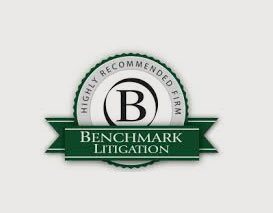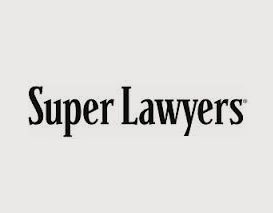After Non-Jury Trial, Court Finds Defendants Committed Fraudulent Acts in Connection with The Construction of a Resort Complex in The Bahamas
Print Article- Posted on: Apr 8 2025
By: Jeffrey M. Haber
On July 8, 2019, this Blog wrote an article titled, “First Department Unanimously Affirms Denial of Motion to Compel Arbitration and Motion to Dismiss Fraud Claims” (here). The article examined the decision of the Appellate Division, First Department in BML Properties Ltd. v. China Construction America Inc., 2019 N.Y. Slip Op. 05339 (1st Dept. July 2, 2019), in which the Court (as the title states) affirmed the denial of a motion to compel arbitration and a motion to dismiss (here). Today, we examine the case after the non-jury trial of the matter. BML Props. Ltd. v. China Constr. Am., Inc., 2025 N.Y. Slip Op. 02030 (1st Dept. Apr. 08, 2025) (here).
In the article, we provided an extensive discussion of the facts of the case, which will not be repeated here. However, we will discuss the facts relevant to the decision examined below.
BML Properties arose from the breakdown of a multibillion-dollar project to build a resort complex in the Bahamas. Nonparty Baha Mar Ltd., a Bahamian entity, was the owner and developer of the project. Plaintiff BML Properties Ltd., another Bahamian entity, was the direct parent of Baha Mar, owned 100% of its voting shares, and was responsible for its day-to-day management. Defendant CSCEC Bahamas, Ltd., a Bahamian entity, was the sole minority shareholder of Baha Mar under an investors agreement (“IA”). Defendant CCA Bahamas Ltd., another Bahamian entity, was the construction manager for the project. Defendant CCA Construction, Inc. was an affiliate of the other defendants; it was not a party to any of the project agreements but was nonetheless involved and had overlapping offices and executives, including Taizhong Wu, who was an executive of CCA Construction and CCA Bahamas and was appointed to Baha Mar’s board on behalf of CSCEC Bahamas.
After a series of delays that ultimately prevented the resort from opening, plaintiff filed for bankruptcy. Plaintiff commenced the action in 2017, asserting causes of action for, among other things, breach of contract and fraud. Regarding the fraud claim, plaintiff alleged that defendants orchestrated a “massive fraudulent scheme” by creating the false and misleading impression that they were meeting on-time and on-budget schedules necessary to open the resort in December 2014, when in fact, defendants were concealing massive delays that, inter alia, increased the costs of construction to the detriment of BML. Plaintiff also sought to pierce the corporate veil, asserting that the defendants were alter egos of one another.
In the initial appeal, the First Department affirmed the motion court’s denial of defendants’ motion to dismiss the fraud claim, holding, inter alia, that “Plaintiff adequately stated a claim for fraud, by asserting justifiable reliance upon assurances, alleged to have been false when made, regarding the project’s status, and the workforce and resources available to meet the deadline for completion of the project, which were collateral to, and not duplicative of plaintiff’s claims for breach of contract.” Id.
Following discovery, the parties brought motions for summary judgment, which resulted in another appeal to the First Department. In that appeal (here), the Court modified the motion court’s order denying defendants’ motion for summary judgment dismissing the complaint and granting plaintiff’s motion for summary judgment dismissing defendants’ counterclaims for breach of the IA and the affirmative defenses that plaintiff’s claims were derivative and released, to grant defendants’ motion as to certain claims and requested relief and to deny plaintiff’s motion as to the counterclaims for breach of the IA.
Relevant to the Court’s decision examined below, the Court held that the motion court properly denied summary judgment dismissing plaintiff’s fraud claims. The Court noted that “[f]act development [did] not create[] a basis to modify [the prior] legal determination.”[1] The Court found that there were “[i]ssues of fact exist with respect to justifiable reliance.”[2] The Court explained that “[e]vidence was presented that plaintiff, which had day-to-day responsibility for the company, relied on defendants’ misrepresentations by taking reservations, preparing for opening, and refraining from seeking additional financing or labor.”[3] The Court further explained that “[e]vidence was also presented that, although plaintiff had some sense that defendants were not telling the truth, it lacked the ability to definitively verify their claims—especially in view of defendants’ apparent concealment of information.”[4] Such evidence sufficed to create issues of fact for the trier of fact to resolve.
As noted by the First Department, the parties proceeded to a nonjury trial. After more than “11 days” of trial, “with 20 witnesses and more than 1000 documentary exhibits”, the lower court entered judgment on October 31, 2024, in favor of plaintiff.[5] Defendants appealed. The First Department unanimously affirmed.
Relevant to this article, defendants argued that the trial court applied the wrong standard for scienter, one of the elements of a fraud claim.
According to defendants,[6] the trial court applied a scienter standard applicable only to auditors. In that regard, said defendants, the trial court found that defendants acted with “reckless disregard” of the truth by “fail[ing] to verify [their] ability to meet the promised deadline.” However, the “reckless disregard” standard, argued defendants, does not apply to future-intention cases, of which BML was, outside the auditor context. Rather, to show fraud based on defendants’ statements, plaintiff had to prove defendants “never intended to honor or act on [their] statement” of future intent.
Plaintiff maintained that the trial court properly found that defendants represented that they could meet the represented deadline, but knew they had no internal plans to do so. Plaintiff also maintained that defendants repeatedly “reaffirmed” that commitment while internally acknowledging their representations “were just phony.” Plaintiff argued that the trial court applied the proper scienter standard, stating that the courts of New York routinely apply the “reckless disregard” of the truth standard in non-auditor cases.
The First Department held that the trial court applied the proper scienter standard.[7] The Court found that “[i]nternal company communications introduced at trial showed that although CCA Bahamas told plaintiff that the project was on track for a March 27, 2015 opening date, CCA Bahamas did not, in fact, believe that it would be possible for the resort to open on that date.”[8] “Thus,” concluded the Court, “the evidence established that defendants misrepresented their ability to perform, which [was] sufficient to support a finding of fraud.”[9]
[Eds. Note: To allege scienter,[10] a plaintiff must allege with particularity that the defendant had an “actual intent to deceive, manipulate, or defraud.”[11] Scienter must be pleaded with “sufficient detail[]”; “conclusory statement[s] of intent” are insufficient.[12] To succeed, therefore, the plaintiff must allege facts from which there is some “rational basis for inferring that the alleged misrepresentations were knowingly made.”[13]
Scienter is a very difficult element to plead. In fact, the scienter element is the hardest to plead because the evidence of intent most often rests solely with the defendant. Because of this difficulty, intent is often inferred from circumstantial evidence.[14]]
Takeaway
Of note in BML Properties is the fact that the parties agreed to use the definition of scienter in the New York pattern jury instructions for fraud and deceit.[15] Under the pattern jury instructions, if the jury determines that the challenged statement was false, it “must next decide whether [the defendant] either knew it was false or made the statement recklessly without regard to whether it was true or false.” Notably, according to the pattern jury instructions, “[a] statement is made recklessly if it is made when the person making it does not have an honest and reasonable belief in its truth.”[16]
In Shear Enterprises, to which the First Department cited in BML Properties, the Court found (for purposes of the motion) that the plaintiff alleged a non-duplicative fraud, stating that “defendants misrepresented their very ‘ability to perform”.[17] In making this finding, the Court rejected the defendants argument that the plaintiff’s allegation was that the defendants “made a promise while harboring the concealed intent not to perform it.” Thus, the alleged fraud in Shear Enterprises was analogous to one of the alleged frauds in BML Properties (e.g., defendants “defendants misrepresented their ability to perform”). As such, the scienter consideration was the same: whether the defendants had an honest and reasonable belief in the truth of their statements.
________________________________
Jeffrey M. Haber is a partner and co-founder of Freiberger Haber LLP.
This article is for informational purposes and is not intended to be and should not be taken as legal advice.
[1] 226 A.D.3d at 583.
[2] Id.
[3] Id. at 583-84.
[4] Id. at 584.
[5] Slip Op. at *1.
[6] The discussion of the parties’ arguments can be found in their briefs on appeal.
[7] Slip Op. at *2.
[8] Id.
[9] Id. (citing Shear Enters., LLC v. Cohen, 189 A.D.3d 423, 424 (1st Dept. 2020)).
[10] To find articles related to the scienter element of a fraud claim, visit the “Blog” tile on our website and enter “scienter” or any other related search term in the “search” box.
[11] Zutty v. Rye (NOR), 33 Misc. 3d1226(A), 2011 WL 5962804 at *11 (Sup. Ct., N.Y. Co. Apr. 15, 2011).
[12] Zanett Lombardier, Ltd. v. Maslow, 29 A.D.3d 495 (1st Dept. 2006) (citation omitted).
[13] Houbigant, Inc. v. Deloitte & Touche LLP, 303 A.D.2d 92, 93 (1st Dept. 2003).
[14] Pludeman v. N. Leasing Sys., Inc., 10 N.Y.3d 486, 488 (2008).
[15] See N.Y. Pattern Jury Instr. – Civil 3:20
[16] In the comments section, the authors of the pattern jury instructions cite to the following authorities: State Street Trust Co. v. Ernst, 278 N.Y. 104 (1938); Hadcock v. Osmer, 153 N.Y. 604 (1897); Curiale v. Peat, Marwick, Mitchell & Co., 214 A.D.2d 16 (1st Dept. 1995); and Terris v. Cummiskey, 11 A.D.2d 259 (3d Dept. 1960).
[17] 189 A.D.3d at 424.





